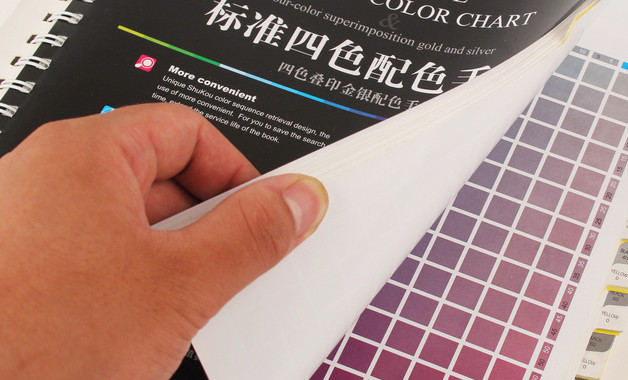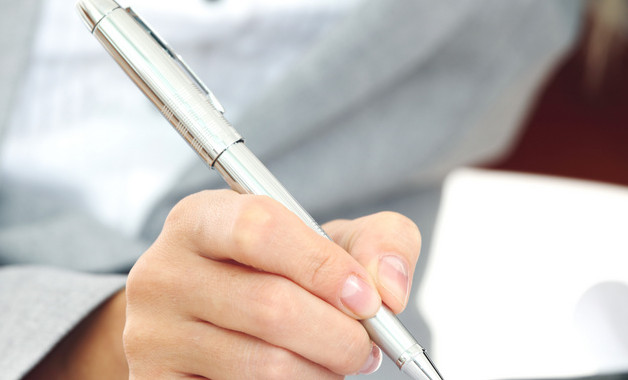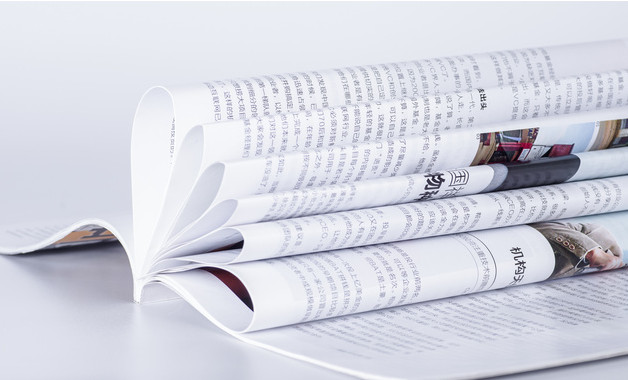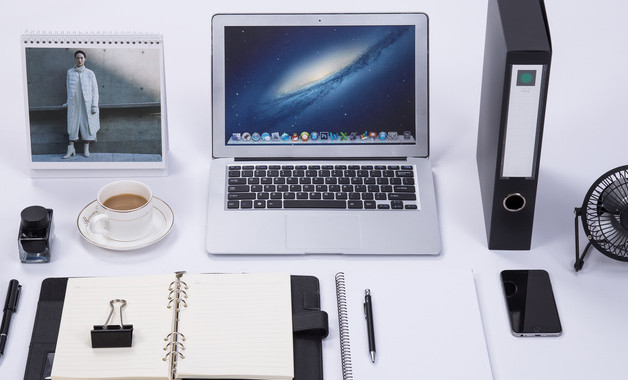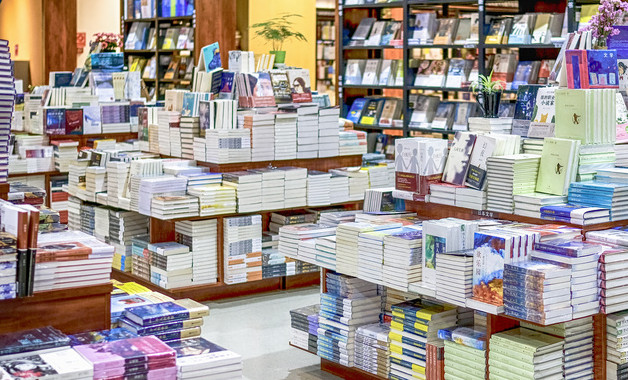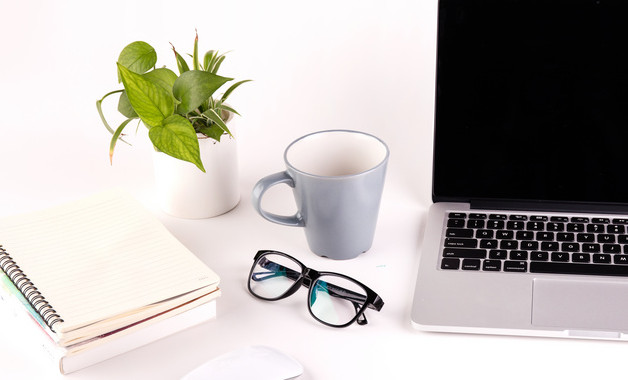- 目录

第1篇 珍惜生命的英语演讲稿范文
珍惜生命的英语演讲稿范文
we should learn to stick to our life no matter how difficult the life is and we should learn to love others .it is the flimtells_ me .
it is a story talks about a black girl named precious .precious is_ fat and not beautiful. her bad temped mother never work_, always cheated others to relieve her ,and ate_ while watching tv all day.what is worse ,precious was only 16,but she had pregnant for twice .out of assumption ,her child is her farther 's child .living in this life ,she alawys imagine to avoid facing her life .fortunately,with the help and careness of the teacher and doctor ,her life became not so bad .
precious has a tough life ,and if she gives up her life and does not join the adult education ,she will not meet the teacher and her life may not be changed .when we _faced with the difficulty _,avoiding_ is not a good way for us. it can not solve the problems.what we need to do is that analying the cause and trying to changed our place .so we should be brave and face the trap directly.
the film also teachs us to love others.precious is someone who may e_it near us .if precious own a good family and some friends,she may not fell so desp__red. in spite of the development of our world ,there still many people suject misfortune.love and help can make them fell better ,so we should not scant our love .
珍惜生命的英语演讲稿范文,已全部结束,感谢你的阅读。
第2篇 在生命的尽头你想要什么ted英语演讲稿带翻译
在生命的尽头你想要什么ted英语演讲稿带翻译
演讲稿的格式由称谓、开场白、主干、结尾等几部分组成。在现实社会中,演讲稿与我们的生活息息相关,为了让您在写演讲稿时更加简单方便,下面是小编收集整理的在生命的尽头你想要什么ted英语演讲稿带翻译,欢迎阅读,希望大家能够喜欢。
well, we all need a reason to wake up. for me, it just took 11,000 volts.
i know you're too polite to ask, so i will tell you.
one night, sophomore year of college, just back from thanksgiving holiday, a few of my friends and i were horsing around, and we decided to climb atop a parked commuter tr__n. it was just sitting there, with the wires that run overhead. somehow, that seemed like a great idea at the time. we'd cert__nly done stupider things. i scurried up the ladder on the back, and when i stood up, the electrical current entered my arm, blew down and out my feet, and that was that. would you believe that watch still works? takes a licking!
my father wears it now in solidarity.
that night began my formal relationship with death —— my death —— and it also began my long run as a patient. it's a good word. it means one who suffers. so i guess we're all patients.
now, the american health care system has more than its f__r share of dysfunction —— to match its brilliance, to be sure. i'm a physician now, a hospice and palliative medicine doc, so i've seen care from both sides. and believe me: almost everyone who goes into healthcare really means well —— i mean, truly. but we who work in it are also unwitting agents for a system that too often does not serve.
why? well, there's actually a pretty easy answer to that question, and it e_pl__ns a lot: because healthcare was designed with diseases, not people, at its center. which is to say, of course, it was badly designed. and nowhere are the effects of bad design more heartbreaking or the opportunity for good design more compelling than at the end of life, where things are so distilled and concentrated. there are no do—overs.
my purpose today is to reach out across disciplines and invite design thinking into this big conversation. that is, to bring intention and creativity to the e_perience of dying. we have a monumental opportunity in front of us, before one of the few universal issues as individuals as well as a civil society: to rethink and redesign how it is we die.
so let's begin at the end. for most people, the scariest thing about death isn't being dead, it's dying, suffering. it's a key distinction. to get underneath this, it can be very helpful to tease out suffering which is necessary as it is, from suffering we can change. the former is a natural, essential part of life, part of the deal, and to this we are called to make space, adjust, grow. it can be really good to realize forces larger than ourselves. they bring proportionality, like a cosmic right—sizing. after my limbs were gone, that loss, for e_ample, became fact, fi_ed —— necessarily part of my life, and i learned that i could no more reject this fact than reject myself. it took me a while, but i learned it eventually. now, another great thing about necessary suffering is that it is the very thing that unites caregiver and care receiver —— human beings. this, we are finally realizing, is where healing happens. yes, compassion —— literally, as we learned yesterday —— suffering together.
now, on the systems side, on the other hand, so much of the suffering is unnecessary, invented. it serves no good purpose. but the good news is, since this brand of suffering is made up, well, we can change it. how we die is indeed something we can affect. making the system sensitive to this fundamental distinction between necessary and unnecessary suffering gives us our first of three design cues for the day. after all, our role as caregivers, as people who care, is to relieve suffering —— not add to the pile.
true to the tenets of palliative care, i function as something of a reflective advocate, as much as prescribing physician. quick aside: palliative care —— a very important field but poorly understood —— while it includes, it is not limited to end of life care. it is not limited to hospice. it's simply about comfort and living well at any stage. so please know that you don't have to be dying anytime soon to benefit from palliative care.
now, let me introduce you to frank. sort of makes this point. i've been seeing frank now for years. he's living with advancing prostate cancer on top of long—standing hiv. we work on his bone p__n and his fatigue, but most of the time we spend thinking out loud together about his life —— really, about our lives. in this way, frank grieves. in this way, he keeps up with his losses as they roll in, so that he's ready to take in the ne_t moment. loss is one thing, but regret, quite another. frank has always been an adventurer —— he looks like something out of a norman rockwell p__nting —— and no fan of regret. so it wasn't surprising when he came into clinic one day, saying he wanted to raft down the colorado river. was this a good idea? with all the risks to his safety and his health, some would say no. many did, but he went for it, while he still could. it was a glorious, marvelous trip: freezing water, blistering dry heat, scorpions, snakes, wildlife howling off the flaming walls of the grand canyon —— all the glorious side of the world beyond our control. frank's decision, while maybe dramatic, is e_actly the kind so many of us would make, if we only had the support to figure out what is best for ourselves over time.
so much of what we're talking about today is a shift in perspective. after my accident, when i went back to college, i changed my major to art history. studying visual art, i figured i'd learn something about how to see —— a really potent lesson for a kid who couldn't change so much of what he was seeing. perspective, that kind of alchemy we humans get to play with, turning anguish into a flower.
flash forward: now i work at an amazing place in san francisco called the zen hospice project, where we have a little ritual that helps with this shift in perspective. when one of our residents dies, the mortuary men come, and as we're wheeling the body out through the garden, heading for the gate, we pause. anyone who wants —— fellow residents, family, nurses, volunteers, the hearse drivers too, now —— shares a story or a song or silence, as we sprinkle the body with flower petals. it takes a few minutes; it's a sweet, simple parting image to usher in grief with warmth, rather than repugnance. contrast that with the typical e_perience in the hospital setting, much like this —— floodlit room lined with tubes and beeping machines and blinking lights that don't stop even when the patient's life has. cleaning crew swoops in, the body's whisked away, and it all feels as though that person had never really e_isted. well—intended, of course, in the name of sterility, but hospitals tend to assault our senses, and the most we might hope for within those walls is numbness —— anesthetic, literally the opposite of aesthetic. i revere hospitals for what they can do; i am alive because of them. but we ask too much of our hospitals. they are places for acute trauma and treatable illness. they are no place to live and die; that's not what they were designed for.
now mind you —— i am not giving up on the notion that our institutions can become more humane. beauty can be found anywhere. i spent a few months in a burn unit at st. barnabas hospital in livingston, new jersey, where i got really great care at every turn, including good palliative care for my p__n. and one night, it began to snow outside. i remember my nurses compl__ning about driving through it. and there was no window in my room, but it was great to just imagine it coming down all sticky. ne_t day, one of my nurses smuggled in a snowball for me. she brought it in to the unit. i cannot tell you the rapture i felt holding that in my hand, and the coldness dripping onto my burning skin; the miracle of it all, the fascination as i watched it melt and turn into water. in that moment, just being any part of this planet in this universe mattered more to me than whether i lived or died. that little snowball packed all the inspiration i needed to both try to live and be ok if i did not. in a hospital, that's a stolen moment.
in my work over the years, i've known many people who were ready to go, ready to die. not because they had found some final peace or transcendence, but because they were so repulsed by what their lives had become —— in a word, cut off, or ugly. there are already record numbers of us living with chronic and terminal illness, and into ever older age. and we are nowhere near ready or prepared for this silver tsunami. we need an infrastructure dynamic enough to handle these seismic shifts in our population. now is the time to create something new, something vital. i know we can because we have to. the alternative is just unacceptable. and the key ingredients are known: policy, education and tr__ning, systems, bricks and mortar. we have tons of input for designers of all stripes to work with.
we know, for e_ample, from research what's most important to people who are closer to death: comfort; feeling unburdened and unburdening to those they love; e_istential peace; and a sense of wonderment and spirituality.
over zen hospice's nearly 30 years, we've learned much more from our residents in subtle det__l. little things aren't so little. take janette. she finds it harder to breathe one day to the ne_t due to als. well, guess what? she wants to start smoking ag__n —— and french cigarettes, if you please. not out of some self—destructive bent, but to feel her lungs filled while she has them. priorities change. or kate —— she just wants to know her dog austin is lying at the foot of her bed, his cold muzzle ag__nst her dry skin, instead of more chemotherapy coursing through her veins —— she's done that. sensuous, aesthetic gratification, where in a moment, in an instant, we are rewarded for just being. so much of it comes down to loving our time by way of the senses, by way of the body —— the very thing doing the living and the dying.
probably the most poignant room in the zen hospice guest house is our kitchen, which is a little strange when you realize that so many of our residents can eat very little, if anything at all. but we realize we are providing sustenance on several levels: smell, a symbolic plane. seriously, with all the heavy—duty stuff happening under our roof, one of the most tried and true interventions we know of, is to bake cookies. as long as we have our senses —— even just one —— we have at least the possibility of accessing what makes us feel human, connected. imagine the ripples of this notion for the millions of people living and dying with dementia. primal sensorial delights that say the things we don't have words for, impulses that make us stay present —— no need for a past or a future.
so, if teasing unnecessary suffering out of the system was our first design cue, then tending to dignity by way of the senses, by way of the body —— the aesthetic realm —— is design cue number two. now this gets us quickly to the third and final bit for today; namely, we need to lift our sights, to set our sights on well—being, so that life and health and healthcare can become about making life more wonderful, rather than just less horrible. beneficence.
here, this gets right at the distinction between a disease—centered and a patient— or human—centered model of care, and here is where caring becomes a creative, generative, even playful act. 'play' may sound like a funny word here. but it is also one of our highest forms of adaptation. consider every major compulsory effort it takes to be human. the need for food has birthed cuisine. the need for shelter has given rise to architecture. the need for cover, fashion. and for being subjected to the clock, well, we invented music. so, since dying is a necessary part of life, what might we create with this fact? by 'play' i am in no way suggesting we take a light approach to dying or that we mandate any particular way of dying. there are mount__ns of sorrow that cannot move, and one way or another, we will all kneel there. rather, i am asking that we make space —— physical, psychic room, to allow life to play itself all the way out —— so that rather than just getting out of the way, aging and dying can become a process of crescendo through to the end. we can't solve for death. i know some of you are working on this.
meanwhile, we can ——
we can design towards it. parts of me died early on, and that's something we can all say one way or another. i got to redesign my life around this fact, and i tell you it has been a liberation to realize you can always find a shock of beauty or meaning in what life you have left, like that snowball lasting for a perfect moment, all the while melting away. if we love such moments ferociously, then maybe we can learn to live well —— not in spite of death, but because of it. let death be what takes us, not lack of imagination.
thank you.
中文演讲稿
我们都需要一个醒来的理由。 对我来说是11,000伏特。
我知道你们太礼貌了不会过问, 那就让我告诉你们。
在大学二年级, 感恩节假期后的一天晚上, 我和几个朋友闹着玩儿, 决定爬到一列停在一旁的通勤列车顶上。 它就停在那儿,缆线就在车顶上方。 不知为什么, 这似乎在那个时候是一个好主意。 我们的确干过比这个还傻的事。 我从后面的梯子窜了上去, 当我站起来的时候, 一股电流进入了我的手臂, 一直到我的脚下然后就这样了。 你能相信那块手表还没坏吗? 真是金刚不坏!
我的父亲现在还一直戴着那块手表。
那天晚上开启了我和死亡 正式的关系——我的死亡—— 也开始了我作为病人的漫长的旅程。 这是一个很合适的词。 它的意思是一个受苦的人。 我想我们应该都是病人吧。
美国的医疗保健系统 有不少的功能障碍—— 当然,它也有杰出的方面。 我现在是一名医生, 安宁病房和临终关怀医生, 所以我从两个角度看医疗系统。 相信我:几乎每一个从事医疗的人 都是十分好心的——是真的。 但是我们这些从事医疗的人也是 在一个有许多缺陷的系统中工作。
为什么呢? 其实有一个很简单的答案, 而且也能反映很多事情: 因为医疗系统的设计是针对疾病的, 而病人不是焦点, 也就是说这个设计是有问题的。 而在生命的尽头,不良的设计的影响 更加让人心痛,完善的设计的机会 也显得更有必要, 因为在生命的尽头, 所有的东西都是浓缩下来的精华。 没有重新来过的机会。
我今天的目的就是号召各个领域的人们, 邀请大家把设计思维带入这个大话题中。 也就是将好意和创意 带入濒死的经历。 这是一个十分难得的机会, 这是一个会影响到个人, 以及整个社会的 普遍问题之一: 重新思考并设计我们如何面对死亡。
我们从终点开始谈起。 对大多数人来说, 变成死人并不是死亡最可怕的部分, 最可怕的是垂死,病痛。 这是一个关键的区别。 为了更好地领会这一切, 那就非常有必要 区分一下死亡无法避免的痛苦 和我们可以改变的痛苦。 前者是一个自然的, 生命中必不可少的一部分, 于是我们为自己预留空间,调整,成长。 能够认识到有比自己更强大的力量是件好事。 这能够带给我们均衡性, 一个全新的自我认识。 在我失去肢体之后, 这个损失变成了一个事实,无法改变—— 这变成了我生活中的一部分, 我认识到抵触这个事实就是在抵触自己。 过了一段时间,我才最终认识到这一点。 这种不可避免的痛苦的另一个好处 是它最能够 团结照顾者和被看护者—— 增进人与人之间的关系。 我们意识到这就是痊愈的开始。 是的,同情——就像我们昨天所学的—— 一起承担。
从另一方面,从医疗系统的角度来看, 有许多痛苦都是没有必要的,制造出来的。 没有任何意义。 但是好消息是:既然这种痛苦是人为造成的, 那我们就可以改变它。 如何死亡确实是我们可以改变的。 让整个系统辨别不可避免的痛苦 和没有必要的痛苦之间的最基本的区别 给予了我们三个中第一个的设计暗示。 毕竟我们作为照顾者的角色, 照顾病人是去减轻他的痛苦, 而不是雪上加霜。
这是缓和医疗的原则, 我的职责就是当一个支持者, 就像一个处方医生一样。 顺便提一下:缓和医疗——是一个非常重要的 工作领域,但是经常被误解—— 它涵盖,但不仅限于病人临终前。 不仅限于安宁病房。 而是在任何一个阶段 都有舒适的生活品质。 所以不一定是在病人临终前 才能得到安宁缓和医疗。
现在,让我给你们介绍一下弗兰克。 他可以证明这一点。 我照顾弗兰克好多年了。 他患有前列腺癌,外加艾滋病。 我们针对治疗他的骨痛和疲倦问题, 但是我们大多时间都在一起思考他的人生—— 其实,就是我们的人生。 弗兰克用这种方法表达他的悲痛。 他用这种方法面对他所失去的一切, 这样他才能去面对下一个难题。 失去是一回事儿,而后悔是另一回事儿。 弗兰克一直是一个探险家—— 他看上去像诺曼·洛克威尔的画里的人物—— 他从不后悔。 所以我一点都不惊讶有一天他来到诊所, 跟我说他想泛竹筏从科罗拉多河顺流而下。 这是一个好主意吗? 考虑到他的人身安全和健康情况, 有些人会说这不行。 很多人都这么说,但是他依旧去了, 趁他还有能力去的时候。 那是一个美好,奇妙的旅程: 冰凉的水,干热的酷暑,蝎子,蛇, 大峡谷似火的岩壁上各种野生动物的嚎叫—— 都是我们无法控制的世界的壮丽的一面。 弗兰克的决定,或许有些戏剧性, 但是如果我们有我们所需要的支持, 去寻找做最有利于自己的选择, 那我们大多数人可能都会做出这样的选择。
今天聊到的许多都是从不同角度看问题。 在我的事故发生之后,我回到了大学, 我把我的主修改成了艺术史。 在学习视觉艺术的过程中, 我发现我学会了如何去观察—— 对于一个无法改变过去所见的孩子来说, 那是强有力有的一课。 观点是一种人们可以改变的炼金术, 可以把煎熬变成花朵。
往前快进: 现在我在旧金山一个很棒的地方工作, 叫做禅宗安宁病房项目。 在那里我们会举行一个小仪式 帮助我们换一个角度看问题。 当我们的一个病人去世后, 太平间的人会来, 当我们推他的遗体车穿过花园时, 在大门前,我们会停留片刻。 任何人—— 其他的住客,家人,护士,志愿者, 还有灵车司机—— 如果他们愿意,他们会分享一段故事, 一首歌,或者简单的沉默, 同时,我们在遗体上撒花瓣; 只有几分钟的时间; 这是个很美好,简单的告别场景, 用温暖迎接悲痛, 而不是厌恶。 把这个和普通的医院中的环境对比, 差不多跟这个一样——灯光照明的房间中 排满各种管子和嘟嘟叫的机器, 还有不停闪烁的灯光, 尽管病人的生命已经停止了。 清理人员立即进来,遗体被快速地接走, 然后就好像那个人从来没有存在过似的。 从卫生角度考虑,他们的做法当然有道理, 但是医院很容易侵犯我们的感官, 在那四面墙内,我们最多也只能期盼麻木—— 麻木不仁,字面意思上和美感完全相反。 我敬仰医院所做的一切, 因为有它们我现在还活着。 但是我们对医院的要求太高了。 它们是处理急性创伤和可治疗疾病的地方。 它们不是应对生死的地方; 它们不是为这个而设计的。
提醒一下——我并没有放弃把 我们的医疗机构变得更加人性化的想法。 任何地方都有美好的事物。 我在在新泽西州利文斯顿的圣巴纳巴斯医院 烧伤科呆了几个月。 我在那里得到无微不至的照顾, 包括针对我的病痛的缓和治疗。、 有一天晚上,外面开始下雪。 我记得我的护士抱怨在雪天开车。 我的房间没有窗户, 但是能想象迷漫的雪花也很好。 第二天,有一个护士为我偷偷地带进来一个雪球。 她把雪球带到烧伤中心里面。 我无法描述我用手捧着雪球 那种欣喜若狂的感觉, 一股股寒意滴在我滚烫的皮肤上; 这一切有多么神奇, 我入迷地看着它融化成水。 在那一刻, 能够属于这个星球上, 这个宇宙中任何一个部分对我来说 比我的生与死还要重要。 那个小小的雪球包含了一切我所需要的.鼓舞, 无论我试着活下去, 还是接受死亡都可以接受。 在医院里,那是我珍藏的一段回忆。
在我多年的工作中,我结交了许多 愿意离开,准备好接受死亡的人。 并不是因为他们找到了 最终的安乐或者超越, 而是因为他们被他们 生命中的转折击退了—— 有一个词,也就是隔绝,丑陋。 生活在长期病痛中和患有绝症的人 已经是历史新高了, 年龄也不断攀升。 而我们丝毫没有准备好迎接这个银色海啸。 我们需要一个有足够动力的 基础设施去应对 这些人口比例的重大变化。 现在正是时候去创造一个 全新的,重要的系统。 我知道我们可以成功, 因为我们必须要这么做。 我们没有选择的余地。 而且,我们已经把握住关键的因素了: 政策,教育和训练, 系统,砖块和砂浆。 我们有无数的信息可以供设计师参考搭建。
比如说,从调查研究中,我们可以得知 对于临终的人而言,什么更加重要: 舒适;没有任何负担,也不牵累他们爱的人; 心境平静;充满感叹和灵性的感觉。
在禅宗安宁病房将近30年的历史中, 我们从我们的住客的 微妙的细节中学到了很多。 有些东西没有它看上去那么小。 拿珍妮特举例。 因为她患有渐冻人症, 每一天她的呼吸都会变得更加困难。 你们猜怎么样? 她又开始想抽烟了—— 还是法国香烟,如果可以的话。 并不是因为自我摧残的倾向, 而是想在她还有肺的时候, 去感受她的肺被充满的感觉。 优先顺序不同了。 还有凯特——她只想感受着 她的狗狗奥斯丁躺在她的床脚, 他冷冷的鼻子贴着她干燥的皮肤, 而不是让更多的化疗流淌在她的血液中—— 她已经经历过了。 在一刹那间,能够感受到美感的满足 立刻成为我们活着的奖励。 这种感觉在我们珍爱的时间中 通过感官和我们的身体—— 也就是正在经历生命和死亡的东西。
也许在禅宗安宁病房中 最凄凉的地方是我们的厨房, 你肯定觉得这有点奇怪, 因为有许多住在病房中的人 就算能进食,也只能很少量。 但是我们意识到这样可以在 许多层面上给他们提供支持: 比如嗅觉,一个象征性的平面。 真的,在我们的病房中所有的重大责任中, 其中我们所知的尝试过多次, 也是最真切的治疗方法, 是烘焙饼干。 只要我们还有感官—— 哪怕只有一个—— 我们至少还有可以接触 人性的感觉,和世界连接。 对于全世界数百万的与痴呆症 生死搏斗的人来说, 我们可以想象一下这个观点的效应。 最原始的感官上的愉悦是我们无法用语言描述的, 是使我们珍惜当下的冲动—— 不需要回到过去或者展望未来。
如果把不必要的痛苦从系统中剔除 是我们的第一个设计提示的话, 那么给予人们感官上的, 身体上的尊严—— 美感的境界—— 则是我们的第二个设计提示。 这也把我们带到今天 第三个和最后一个部分; 也就是,我们需要提高眼界, 把重点放在人们的福祉上, 为的是生命,健康和医疗 可以使生活变得更加美好, 而不只是少几分可怕。 慈善。
区别就在这儿, 在一个以疾病为核心 和一个以人为核心的医疗模式之间, 在这儿,医疗变成了一种有创意、生产力, 甚至好玩的举动。 '玩'在这里是一个很有趣的词。 但它也是我们适应的最高境界之一。 想一想人类每一个不可缺少的需求。 我们对食物的需求带来了烹饪。 我们对遮风避雨的需求构成了建筑。 我们对遮蔽身体的需求促成了时尚。 而因为我们要服从于时间, 我们发明了音乐。 那么,既然死亡也是生命中 必不可少的一部分, 我们又能创造出什么呢? 说到'玩',我决不是 在提议我们轻视死亡 或者指定某种特定的死亡方式。 有许多悲伤是我们无法消除的, 无论如何,我们都会屈服于它的。 我只是希望大家可以创造一点空间—— 生理和心理上的空间, 让生命自己走完它的路—— 而不是把它赶走, 衰老和临终可以变成 一个渐强的过程一直到结尾。 我们无法避免死亡。 我知道你们有些人在尝试。
在此同时,我们可以——
我们可以针对死亡做设计。 我的一部分很早以前就已经死了, 不管怎么说,事实就是这样。 但是我针对这个事实重新设计了我的人生, 当你意识到你在生命中 永远可以找到 美好的事物和有意义的事情时, 我可以告诉你们这是一种解放。 就像那个停留在完美的一瞬间的雪球, 同时一直在融化。 如果我们能够拼尽全力去爱那些片刻, 也许我们就能学会如何活得更加精彩—— 不是不顾死亡而活得精彩, 而是因为死亡而活得精彩。 可以让死亡夺走我们的生命, 但别让它带走我们的想象力。
谢谢
第3篇 ted英语演讲:生命无限,勇往直前
| 中英文演讲稿 |
if your life were a book and you were the author, how would you want your story to go? that's the question that changed my life forever. growing up in the hot last vegas desert, all i wanted was to be free. i would daydream about traveling the world, living in a place where it snowed, and i would picture all of the stories that i would go on to tell.
如果你的人生是一本书 你是书的作者 你会怎么写你的故事? 这个问题永远改变了我的一生 生长在拉斯维加斯的炎热沙漠 我一直向往自由 我做着白日梦 梦想周游世界 住在能看见雪的地方 编我想讲述的 所有故事
at the age of 19, the day after i graduated high school, i moved to a place where it snowed and i became a massage therapist. with this job all i needed were my hands and my massage table by my side and i could go anywhere. for the first time in my life, i felt free, independent and completely in control of my life. that is, until my life took a detour. i went home from work early one day with what i thought was the flu, and less than 24 hours later i was in the hospital on life support with less than a two percent chance of living. it wasn't until days later as i lay in a coma that the doctors diagnosed me with bacterial meningitis, a vaccine-preventable blood infection. over the course of two and a half months i lost my spleen, my kidneys, the hearing in my left ear and both of my legs below the knee.
19岁那年 在我从高中毕业后 我搬到了能见到雪的地方 我成为一名按摩师 这份工作只需要双手 以及身边的按摩桌 而且我可以去任何地方 有生以来头一次 我感到自由 独立 对生活充满把握 直到人生出现了一个转折 一天我下班比往常早 以为自己得了流感 24小时不到 我就进了医院 生命垂危 只有2%的存活几率 之后的几天 我陷入昏迷 医生诊断我得了 细菌性脑膜炎 疫苗可预防性血液感染 在为期两个半月的治疗中 我切除了脾和肾 左耳失聪 膝盖以下截肢
when my parents wheeled me out of the hospital i felt like i had been pieced back together like a patchwork doll. i thought the worst was over until weeks later when i saw my new legs for the first time. the calves were bulky blocks of metal with pipes bolted together for the ankles and a yellow rubber foot with a r__sed rubber line from the toe to the ankle to look like a vein. i didn't know what to e_pect, but i wasn't e_pecting that.
当父母把我推出医院时 我感到自己被重新拼凑起来 像一个拼布娃娃 我以为最惨的事已完结 直到我第一次见到 自己的新腿 小腿是笨重的金属块 脚踝用管子和螺丝固定 外加黄色的橡胶脚 突起的橡胶线从脚趾延伸到脚踝 为了使它们看起来像血管 我不知道我想要的结果是什么 但绝不会是这个
with my mom by my side and tears streaming down our faces, i strapped on these chunky legs and i stood up. they were so p__nful and so confining that all i could think was, how am i ever going to travel the world in these things? how was i ever going to live the life full of adventure and stories, as i always wanted? and how was i going to snowboard ag__n?
妈妈站在我旁边 两个人泪水肆意 我绑上这两条粗短腿 然后站起来 它们让我感到十分痛苦,并且充满限制 我脑子里只有一个想法: 用这些破玩意我怎么能周游世界? 我如何才能过我 一直想要的异彩纷呈的生活?
that day, i went home, i crawled into bed and this is what my life looked like for the ne_t few months: me passed out, escaping from reality, with my legs resting by my side. i was absolutely physically and emotionally broken.
我如何才能再玩单板滑雪? 那天,我回到家,爬上床 这是我接下来几个月的 生活状态: 我躺在床上, 淡出生活 逃离现实 我的腿放在床边.我在生理上和心理上完全崩溃了
but i knew that in order to move forward, i had to let go of the old amy and learn to embrace the new amy. and that is when it dawned on me that i didn't have to be five-foot-five anymore. i could be as tall as i wanted! (laughter) (applause) or as short as i wanted, depending on who i was dating. (laughter) and if i snowboarded ag__n, my feet aren't going to get cold. (laughter) and best of all, i thought, i can make my feet the size of all the shoes that are on the sales rack. (laughter) and i did! so there were benefits here.
但是我知道 为了向前走 我必须放开过去的艾米 学着接受新的艾米 那时 我突然想到 我再也不只有5.5英尺高了 我可以想多高有多高 (笑声)(掌声) 或者想多矮有多矮 这得看我和谁约会 (笑声) 如果我再玩单板滑雪 脚再也不会冷 (笑声) 我觉得最棒的是 我可以调整脚的大小来适合 货架上任何尺码的鞋子 (笑声) 我真那么干了! 所以这还是有些好处的
it was this moment that i asked myself that life-defining question: if my life were a book and i were the author, how would i want the story to go? and i began to daydream. i daydreamed like i did as a little girl and i imagined myself walking gracefully, helping other people through my journey and snowboarding ag__n. and i didn't just see myself carving down a mount__n of powder, i could actually feel it. i could feel the wind ag__nst my face and the beat of my racing heart as if it were happening in that very moment. and that is when a new chapter in my life began.
那一刻我问了自己 一个决定人生走向的问题 如果人生是一本书 而我是作者 我会怎么写这个故事? 我开始做白日梦 想小时候那样做梦 我想象自己 优雅地前行 在路途中帮助别人 再次玩单板滑雪 我并不是仅仅看到自己 从山上滑下来 我可以真切感受到那个场景 我可以感受到风扑面而来 感受到心脏的韵律 如同那一刻正在真实发生.那就是我开启人生新篇章的时刻
four months later i was back up on a snowboard, although things didn't go quite as e_pected: my knees and my ankles wouldn't bend and at one point i traumatized all the skiers on the ch__r lift when i fell and my legs, still attached to my snowboard — (laughter) — went flying down the mount__n, and i was on top of the mount__n still. i was so shocked, i was just as shocked as everybody else, and i was so discouraged, but i knew that if i could find the right p__r of feet that i would be able to do this ag__n. and this is when i learned that our borders and our obstacles can only do two things: one, stop us in our tracks or two, force us to get creative.
4个月之后,我重拾单板滑雪 虽然事情并不像我期待的那样 我的膝盖和脚踝无法弯曲 在某一点上我吓坏了升降椅上所有的滑雪者 (笑声)就是当我摔倒时,我的腿还连着滑板 (笑声) 它们一起飞落到山脚 而我依然在山顶 (笑声)我被惊到了 同其他人一样 我惊呆了 而且很失落 但是我知道 如果我找到了两条合适的腿 我完全可以成功 这时 我明白了 艰难险阻只能做两件事:一是将我们困在原来的轨道 二是迫使我们充满创造力
i did a year of research, still couldn't figure out what kind of legs to use, couldn't find any resources that could help me. so i decided to make a p__r myself. my leg maker and i put random parts together and we made a p__r of feet that i could snowboard in. as you can see, rusted bolts, rubber, wood and neon pink duct tape. and yes, i can change my toen__l polish. it was these legs and the best 21st birthday gift i could ever receive — a new kidney from my dad — that allowed me to follow my dreams ag__n. i started snowboarding, then i went back to work, then i went back to school.
我研究了一年 仍然不知道 用什么样的腿 也找不到任何有用的资源 于是我决定自己做一副假腿 我和制作者把各种部件拼在一起 做了两条可以玩滑板的腿 你可以看到 生锈的螺栓、橡胶、木头和荧光粉胶带 没错 我可以换指甲颜色 这双假腿 以及我21岁生日收到的最好礼物—— ——我爸爸的一个肾 让我再次追逐梦想.我开始玩单板滑雪 我重新工作 并回到学校
then in 20__ i cofounded a nonprofit organization for youth and young adults with physical disabilities so they could get involved with action sports. from there, i had the opportunity to go to south africa, where i helped to put shoes on thousands of children's feet so they could attend school.
20__年我创办了一个非盈利组织 用来救助身体残疾的年轻人 使他们能再次参加体育运动 从那时起 我有机会前往南非 给千百儿童带来鞋子 这样他们就可以去上学
and just this past february, i won two back-to-back world cup gold medals — (applause) — which made me the highest ranked adaptive female snowboarder in the world.
在刚刚过去的二月 我相继取得两块世界金牌 (掌声) ——这使我成为 世界上最高级别的残疾人女子单板滑雪运动员.
eleven years ago, when i lost my legs, i had no idea what to e_pect. but if you ask me today, if i would ever want to change my situation, i would have to say no. because my legs haven't disabled me, if anything they've enabled me. they've forced me to rely on my imagination and to believe in the possibilities, and that's why i believe that our imaginations can be used as tools for breaking through borders, because in our minds, we can do anything and we can be anything.
20__年前 当我失去腿时 我不知道该期盼什么 但是如果你现在问我 是否愿意换个人生 我会回答不 因为我的双腿并没有阻碍我 如果说它们给我带来了什么 那就是它们让我依靠想象力 让我相信一切皆有可能 这就是为什么我相信 想象可以成为工具 用来冲破障碍 因为在脑子里 我们可以做任何事 可以成为任何人
it's believing in those dreams and facing our fears head-on that allows us to live our lives beyond our limits. and although today is about innovation without borders, i have to say that in my life, innovation has only been possible because of my borders. i've learned that borders are where the actual ends, but also where the imagination and the story begins.
相信梦想 直面恐惧 能够让我们的生活 超出局限 虽然今天在讲无边界创新 但我不得不说 在我的生命里 是我自身的种种局限 让不可能变成可能 我知道这些局限 才是现实结束 想象产生 故事开始的地方
so the thought that i would like to challenge you with today is that maybe instead of looking at our challenges and our limitations as something negative or bad, we can begin to look at them as blessings, magnificent gifts that can be used to ignite our imaginations and help us go further than we ever knew we could go. it's not about breaking down borders. it's about pushing off of them and seeing what amazing places they might bring us. thank you.
所以 今天我想让你们挑战的是 与其把挑战、局限看做 不利或者坏事 我们可以把它们看做恩惠 可以点亮想象的神奇礼物 能帮助我们走得更远 远到我们从未想过 这不是要打破局限 而是把局限推得更广 然后看看它们能把我们带到 怎样美好的地方 谢谢 (掌声)
第4篇 ted英语演讲:你为生命的终结做好准备了吗
演说题目:你为生命的终结做好准备了吗?
演说者:judy macdonald
what would be a good end of life?
什么是一个生活美好的结尾?
and i'm talking about the very end.
我所说的是最终的结尾
i'm talking about dying.
我所说的是死亡
we all think a lot about how to live well.
我们都在想如何更好的生活
i'd like to talk about increasing our chances of dying well.
而我想要谈的是,如何更美好地告别人生
i'm not a geriatrician.
我并不是老年病学家
i design reading programs for preschoolers.
我为学前班的孩子设计阅读课程
what i know about this topic
我对这个话题的了解
comes from a qualitative study with a sample size of two.
来源于一个定性的研究,其中有两个案例
in the last few years, i helped two friends
在过去的几年,我帮助两个好朋友
have the end of life they wanted.
以他们想要的方式,结束了他们的生命
jim and shirley modini spent their 68 years of marriage jim
和 shirley modini度过了他们68年的婚姻生活
living off the grid on their 1,700-acre ranch
生活在远离城镇的,1,700英亩的牧场里
in the mount__ns of sonoma county. sonoma
县的山区
they kept just enough livestock to make ends meet
他们喂养了仅仅是能养活他们自己的家禽
so that the majority of their ranch would rem__n a refuge
所以这大部分的牧场变成了避难所
for the bears and lions and so many other things
给熊,狮子和其他的动物
that lived there.
生活在那里
this was their dream.
这正是他们的梦想
i met jim and shirley in their 80s.
我在两个老人年迈八十的时候遇见他们
they were both only children who chose not to have kids.
他们只有一个子女,而他选择不要孩子
as we became friends, i became their trustee
当我们成为朋友后,我变成了他们的托管人
and their medical advocate,
与他们的医疗顾问
but more importantly, i became
但是更重要的是
the person who managed their end-of-life e_periences.
我成为了帮助他们结束生活的那个人
and we learned a few things about how to have a good end.
并且我们学到了,如何有个好的结局
in their final years, jim and shirley
在最后的几年里, jim和 shirley
faced cancers, fractures, infections, neurological illness.
他们面对着癌症,骨折,传染病和神经上上的疾病
it's true.
这是真的
at the end, our bodily functions
人到了最后,我们身体的功能
and independence are declining to zero.
和独立性会降低到零
what we found is that, with a plan and the right people,
我们发现,如果有正确的计划和人
quality of life can rem__n high.
他们还是可以拥有高品质的生活
the beginning of the end is triggered
结束的开始是被其他所引起的
by a mortality awareness event, and during this time,
像对死亡的意识,并且在此期间
jim and shirley chose acr nature preserves jim
和 shirley选择了acr自然保护区
to take their ranch over when they were gone.
在他们去世后接手牧场
this gave them the peace of mind to move forward.
这给了他们一片祥和,然后继续前行
it might be a diagnosis. it might be your intuition.
这可能是个诊断,也可能是你的直觉
but one day, you're going to say, 'this thing is going to get me.'
有一天,你会说,这样的事情会打垮我
jim and shirley spent this time jim
和shirley用这些时间
letting friends know that their end was near
让他们的朋友知道,离他们离开人世的时间不远了
and that they were okay with that.
而他们对此没有埋怨
dying from cancer and dying from neurological illness
因为患癌症与神经疾病而死去
are different.
是不一样的
in both cases, last days are about quiet reassurance.
两种情况,最后的几天都非常安详
jim died first. he was conscious until the very end, jim
先离去,到最后他都非常的清醒
but on his last day he couldn't talk.
但是在他最后一天,他说不了话
through his eyes, we knew when he needed to hear ag__n,
通过他的眼睛,我们知道当他想听我们说话
'it is all set, jim. we're going to take care of shirley
“什么都很好,jim。我们会好好照顾 shirley。
right here at the ranch,
就在此时,在牧场
and acr's going to take care of your wildlife forever.'
acr会永远帮你保护好这里的野生动植物
from this e_perience i'm going to share five practices.
从这个经历中,我想和大家分享五个方案
i've put worksheets online,
我已经把步骤公布在了网上
so if you'd like, you can plan your own end.
所以如果你愿意,你可以计划你自己结束的方式
it starts with a plan.
这个步骤以着手计划开始
most people say, 'i'd like to die at home.'
很多人会说”我愿意死在家里.'
eighty percent of americans die in a hospital
但是百分之八十的美国人,在医院里死去
or a nursing home.
或者是养老院
saying we'd like to die at home is not a plan.
所以说想死在家里,并不是一个计划
a lot of people say, 'if i get like that, just shoot me.'
很多人又会说“如果我像那样,一枪打死我”
this is not a plan either; this is illegal.
这也不是,因为不合法。
第5篇 ted英语演讲:在生命的尽头你想要什么
英文演讲稿
well, we all need a reason to wake up. for me, it just took 11,000 volts.
i know you're too polite to ask, so i will tell you.
one night, sophomore year of college, just back from thanksgiving holiday, a few of my friends and i were horsing around, and we decided to climb atop a parked commuter tr__n. it was just sitting there, with the wires that run overhead. somehow, that seemed like a great idea at the time. we'd cert__nly done stupider things. i scurried up the ladder on the back, and when i stood up, the electrical current entered my arm, blew down and out my feet, and that was that. would you believe that watch still works? takes a licking!
my father wears it now in solidarity.
that night began my formal relationship with death -- my death -- and it also began my long run as a patient. it's a good word. it means one who suffers. so i guess we're all patients.
now, the american health care system has more than its f__r share of dysfunction -- to match its brilliance, to be sure. i'm a physician now, a hospice and palliative medicine doc, so i've seen care from both sides. and believe me: almost everyone who goes into healthcare really means well -- i mean, truly. but we who work in it are also unwitting agents for a system that too often does not serve.
why? well, there's actually a pretty easy answer to that question, and it e_pl__ns a lot: because healthcare was designed with diseases, not people, at its center. which is to say, of course, it was badly designed. and nowhere are the effects of bad design more heartbreaking or the opportunity for good design more compelling than at the end of life, where things are so distilled and concentrated. there are no do-overs.
my purpose today is to reach out across disciplines and invite design thinking into this big conversation. that is, to bring intention and creativity to the e_perience of dying. we have a monumental opportunity in front of us, before one of the few universal issues as individuals as well as a civil society: to rethink and redesign how it is we die.
so let's begin at the end. for most people, the scariest thing about death isn't being dead, it's dying, suffering. it's a key distinction. to get underneath this, it can be very helpful to tease out suffering which is necessary as it is, from suffering we can change. the former is a natural, essential part of life, part of the deal, and to this we are called to make space, adjust, grow. it can be really good to realize forces larger than ourselves. they bring proportionality, like a cosmic right-sizing. after my limbs were gone, that loss, for e_ample, became fact, fi_ed -- necessarily part of my life, and i learned that i could no more reject this fact than reject myself. it took me a while, but i learned it eventually. now, another great thing about necessary suffering is that it is the very thing that unites caregiver and care receiver -- human beings. this, we are finally realizing, is where healing happens. yes, compassion -- literally, as we learned yesterday -- suffering together.
now, on the systems side, on the other hand, so much of the suffering is unnecessary, invented. it serves no good purpose. but the good news is, since this brand of suffering is made up, well, we can change it. how we die is indeed something we can affect. making the system sensitive to this fundamental distinction between necessary and unnecessary suffering gives us our first of three design cues for the day. after all, our role as caregivers, as people who care, is to relieve suffering -- not add to the pile.
true to the tenets of palliative care, i function as something of a reflective advocate, as much as prescribing physician. quick aside: palliative care -- a very important field but poorly understood -- while it includes, it is not limited to end of life care. it is not limited to hospice. it's simply about comfort and living well at any stage. so please know that you don't have to be dying anytime soon to benefit from palliative care.
now, let me introduce you to frank. sort of makes this point. i've been seeing frank now for years. he's living with advancing prostate cancer on top of long-standing hiv. we work on his bone p__n and his fatigue, but most of the time we spend thinking out loud together about his life -- really, about our lives. in this way, frank grieves. in this way, he keeps up with his losses as they roll in, so that he's ready to take in the ne_t moment. loss is one thing, but regret, quite another. frank has always been an adventurer -- he looks like something out of a norman rockwell p__nting -- and no fan of regret. so it wasn't surprising when he came into clinic one day, saying he wanted to raft down the colorado river. was this a good idea? with all the risks to his safety and his health, some would say no. many did, but he went for it, while he still could. it was a glorious, marvelous trip: freezing water, blistering dry heat, scorpions, snakes, wildlife howling off the flaming walls of the grand canyon -- all the glorious side of the world beyond our control. frank's decision, while maybe dramatic, is e_actly the kind so many of us would make, if we only had the support to figure out what is best for ourselves over time.
so much of what we're talking about today is a shift in perspective. after my accident, when i went back to college, i changed my major to art history. studying visual art, i figured i'd learn something about how to see -- a really potent lesson for a kid who couldn't change so much of what he was seeing. perspective, that kind of alchemy we humans get to play with, turning anguish into a flower.
flash forward: now i work at an amazing place in san francisco called the zen hospice project, where we have a little ritual that helps with this shift in perspective. when one of our residents dies, the mortuary men come, and as we're wheeling the body out through the garden, heading for the gate, we pause. anyone who wants -- fellow residents, family, nurses, volunteers, the hearse drivers too, now -- shares a story or a song or silence, as we sprinkle the body with flower petals. it takes a few minutes; it's a sweet, simple parting image to usher in grief with warmth, rather than repugnance. contrast that with the typical e_perience in the hospital setting, much like this -- floodlit room lined with tubes and beeping machines and blinking lights that don't stop even when the patient's life has. cleaning crew swoops in, the body's whisked away, and it all feels as though that person had never really e_isted. well-intended, of course, in the name of sterility, but hospitals tend to assault our senses, and the most we might hope for within those walls is numbness -- anesthetic, literally the opposite of aesthetic. i revere hospitals for what they can do; i am alive because of them. but we ask too much of our hospitals. they are places for acute trauma and treatable illness. they are no place to live and die; that's not what they were designed for.
now mind you -- i am not giving up on the notion that our institutions can become more humane. beauty can be found anywhere. i spent a few months in a burn unit at st. barnabas hospital in livingston, new jersey, where i got really great care at every turn, including good palliative care for my p__n. and one night, it began to snow outside. i remember my nurses compl__ning about driving through it. and there was no window in my room, but it was great to just imagine it coming down all sticky. ne_t day, one of my nurses smuggled in a snowball for me. she brought it in to the unit. i cannot tell you the rapture i felt holding that in my hand, and the coldness dripping onto my burning skin; the miracle of it all, the fascination as i watched it melt and turn into water. in that moment, just being any part of this planet in this universe mattered more to me than whether i lived or died. that little snowball packed all the inspiration i needed to both try to live and be ok if i did not. in a hospital, that's a stolen moment.
in my work over the years, i've known many people who were ready to go, ready to die. not because they had found some final peace or transcendence, but because they were so repulsed by what their lives had become -- in a word, cut off, or ugly. there are already record numbers of us living with chronic and terminal illness, and into ever older age. and we are nowhere near ready or prepared for this silver tsunami. we need an infrastructure dynamic enough to handle these seismic shifts in our population. now is the time to create something new, something vital. i know we can because we have to. the alternative is just unacceptable. and the key ingredients are known: policy, education and tr__ning, systems, bricks and mortar. we have tons of input for designers of all stripes to work with.
we know, for e_ample, from research what's most important to people who are closer to death: comfort; feeling unburdened and unburdening to those they love; e_istential peace; and a sense of wonderment and spirituality.
over zen hospice's nearly 30 years, we've learned much more from our residents in subtle det__l. little things aren't so little. take janette. she finds it harder to breathe one day to the ne_t due to als. well, guess what? she wants to start smoking ag__n -- and french cigarettes, if you please. not out of some self-destructive bent, but to feel her lungs filled while she has them. priorities change. or kate -- she just wants to know her dog austin is lying at the foot of her bed, his cold muzzle ag__nst her dry skin, instead of more chemotherapy coursing through her veins -- she's done that. sensuous, aesthetic gratification, where in a moment, in an instant, we are rewarded for just being. so much of it comes down to loving our time by way of the senses, by way of the body -- the very thing doing the living and the dying.
probably the most poignant room in the zen hospice guest house is our kitchen, which is a little strange when you realize that so many of our residents can eat very little, if anything at all. but we realize we are providing sustenance on several levels: smell, a symbolic plane. seriously, with all the heavy-duty stuff happening under our roof, one of the most tried and true interventions we know of, is to bake cookies. as long as we have our senses -- even just one -- we have at least the possibility of accessing what makes us feel human, connected. imagine the ripples of this notion for the millions of people living and dying with dementia. primal sensorial delights that say the things we don't have words for, impulses that make us stay present -- no need for a past or a future.
so, if teasing unnecessary suffering out of the system was our first design cue, then tending to dignity by way of the senses, by way of the body -- the aesthetic realm -- is design cue number two. now this gets us quickly to the third and final bit for today; namely, we need to lift our sights, to set our sights on well-being, so that life and health and healthcare can become about making life more wonderful, rather than just less horrible. beneficence.
here, this gets right at the distinction between a disease-centered and a patient- or human-centered model of care, and here is where caring becomes a creative, generative, even playful act. 'play' may sound like a funny word here. but it is also one of our highest forms of adaptation. consider every major compulsory effort it takes to be human. the need for food has birthed cuisine. the need for shelter has given rise to architecture. the need for cover, fashion. and for being subjected to the clock, well, we invented music. so, since dying is a necessary part of life, what might we create with this fact? by 'play' i am in no way suggesting we take a light approach to dying or that we mandate any particular way of dying. there are mount__ns of sorrow that cannot move, and one way or another, we will all kneel there. rather, i am asking that we make space -- physical, psychic room, to allow life to play itself all the way out -- so that rather than just getting out of the way, aging and dying can become a process of crescendo through to the end. we can't solve for death. i know some of you are working on this.
meanwhile, we can --
we can design towards it. parts of me died early on, and that's something we can all say one way or another. i got to redesign my life around this fact, and i tell you it has been a liberation to realize you can always find a shock of beauty or meaning in what life you have left, like that snowball lasting for a perfect moment, all the while melting away. if we love such moments ferociously, then maybe we can learn to live well -- not in spite of death, but because of it. let death be what takes us, not lack of imagination.
thank you.
中文演讲稿
我们都需要一个醒来的理由。 对我来说是11,000伏特。
我知道你们太礼貌了不会过问, 那就让我告诉你们。
在大学二年级, 感恩节假期后的一天晚上, 我和几个朋友闹着玩儿, 决定爬到一列停在一旁的通勤列车顶上。 它就停在那儿,缆线就在车顶上方。 不知为什么, 这似乎在那个时候是一个好主意。 我们的确干过比这个还傻的事。 我从后面的梯子窜了上去, 当我站起来的时候, 一股电流进入了我的手臂, 一直到我的脚下然后就这样了。 你能相信那块手表还没坏吗? 真是金刚不坏!
我的父亲现在还一直戴着那块手表。
那天晚上开启了我和死亡 正式的关系——我的死亡—— 也开始了我作为病人的漫长的旅程。 这是一个很合适的词。 它的意思是一个受苦的人。 我想我们应该都是病人吧。
美国的医疗保健系统 有不少的功能障碍—— 当然,它也有杰出的方面。 我现在是一名医生, 安宁病房和临终关怀医生, 所以我从两个角度看医疗系统。 相信我:几乎每一个从事医疗的人 都是十分好心的——是真的。 但是我们这些从事医疗的人也是 在一个有许多缺陷的系统中工作。
为什么呢? 其实有一个很简单的答案, 而且也能反映很多事情: 因为医疗系统的设计是针对疾病的, 而病人不是焦点, 也就是说这个设计是有问题的。 而在生命的尽头,不良的设计的影响 更加让人心痛,完善的设计的机会 也显得更有必要, 因为在生命的尽头, 所有的东西都是浓缩下来的精华。 没有重新来过的机会。
我今天的目的就是号召各个领域的人们, 邀请大家把设计思维带入这个大话题中。 也就是将好意和创意 带入濒死的经历。 这是一个十分难得的机会, 这是一个会影响到个人, 以及整个社会的 普遍问题之一: 重新思考并设计我们如何面对死亡。
我们从终点开始谈起。 对大多数人来说, 变成死人并不是死亡最可怕的部分, 最可怕的是垂死,病痛。 这是一个关键的区别。 为了更好地领会这一切, 那就非常有必要 区分一下死亡无法避免的痛苦 和我们可以改变的痛苦。 前者是一个自然的, 生命中必不可少的一部分, 于是我们为自己预留空间,调整,成长。 能够认识到有比自己更强大的力量是件好事。 这能够带给我们均衡性, 一个全新的自我认识。 在我失去肢体之后, 这个损失变成了一个事实,无法改变—— 这变成了我生活中的一部分, 我认识到抵触这个事实就是在抵触自己。 过了一段时间,我才最终认识到这一点。 这种不可避免的痛苦的另一个好处 是它最能够 团结照顾者和被看护者—— 增进人与人之间的关系。 我们意识到这就是痊愈的开始。 是的,同情——就像我们昨天所学的—— 一起承担。
从另一方面,从医疗系统的角度来看, 有许多痛苦都是没有必要的,制造出来的。 没有任何意义。 但是好消息是:既然这种痛苦是人为造成的, 那我们就可以改变它。 如何死亡确实是我们可以改变的。 让整个系统辨别不可避免的痛苦 和没有必要的痛苦之间的最基本的区别 给予了我们三个中第一个的设计暗示。 毕竟我们作为照顾者的角色, 照顾病人是去减轻他的痛苦, 而不是雪上加霜。
这是缓和医疗的原则, 我的职责就是当一个支持者, 就像一个处方医生一样。 顺便提一下:缓和医疗——是一个非常重要的 工作领域,但是经常被误解—— 它涵盖,但不仅限于病人临终前。 不仅限于安宁病房。 而是在任何一个阶段 都有舒适的生活品质。 所以不一定是在病人临终前 才能得到安宁缓和医疗。
现在,让我给你们介绍一下弗兰克。 他可以证明这一点。 我照顾弗兰克好多年了。 他患有前列腺癌,外加艾滋病。 我们针对治疗他的骨痛和疲倦问题, 但是我们大多时间都在一起思考他的人生—— 其实,就是我们的人生。 弗兰克用这种方法表达他的悲痛。 他用这种方法面对他所失去的一切, 这样他才能去面对下一个难题。 失去是一回事儿,而后悔是另一回事儿。 弗兰克一直是一个探险家—— 他看上去像诺曼·洛克威尔的画里的人物—— 他从不后悔。 所以我一点都不惊讶有一天他来到诊所, 跟我说他想泛竹筏从科罗拉多河顺流而下。 这是一个好主意吗? 考虑到他的人身安全和健康情况, 有些人会说这不行。 很多人都这么说,但是他依旧去了, 趁他还有能力去的时候。 那是一个美好,奇妙的旅程: 冰凉的水,干热的酷暑,蝎子,蛇, 大峡谷似火的岩壁上各种野生动物的嚎叫—— 都是我们无法控制的世界的壮丽的一面。 弗兰克的决定,或许有些戏剧性, 但是如果我们有我们所需要的支持, 去寻找做最有利于自己的选择, 那我们大多数人可能都会做出这样的选择。
今天聊到的许多都是从不同角度看问题。 在我的事故发生之后,我回到了大学, 我把我的主修改成了艺术史。 在学习视觉艺术的过程中, 我发现我学会了如何去观察—— 对于一个无法改变过去所见的孩子来说, 那是强有力有的一课。 观点是一种人们可以改变的炼金术, 可以把煎熬变成花朵。
往前快进: 现在我在旧金山一个很棒的地方工作, 叫做禅宗安宁病房项目。 在那里我们会举行一个小仪式 帮助我们换一个角度看问题。 当我们的一个病人去世后, 太平间的人会来, 当我们推他的遗体车穿过花园时, 在大门前,我们会停留片刻。 任何人—— 其他的住客,家人,护士,志愿者, 还有灵车司机—— 如果他们愿意,他们会分享一段故事, 一首歌,或者简单的沉默, 同时,我们在遗体上撒花瓣; 只有几分钟的时间; 这是个很美好,简单的告别场景, 用温暖迎接悲痛, 而不是厌恶。 把这个和普通的医院中的环境对比, 差不多跟这个一样——灯光照明的房间中 排满各种管子和嘟嘟叫的机器, 还有不停闪烁的灯光, 尽管病人的生命已经停止了。 清理人员立即进来,遗体被快速地接走, 然后就好像那个人从来没有存在过似的。 从卫生角度考虑,他们的做法当然有道理, 但是医院很容易侵犯我们的感官, 在那四面墙内,我们最多也只能期盼麻木—— 麻木不仁,字面意思上和美感完全相反。 我敬仰医院所做的一切, 因为有它们我现在还活着。 但是我们对医院的要求太高了。 它们是处理急性创伤和可治疗疾病的地方。 它们不是应对生死的地方; 它们不是为这个而设计的。
提醒一下——我并没有放弃把 我们的医疗机构变得更加人性化的想法。 任何地方都有美好的事物。 我在在新泽西州利文斯顿的圣巴纳巴斯医院 烧伤科呆了几个月。 我在那里得到无微不至的照顾, 包括针对我的病痛的缓和治疗。、 有一天晚上,外面开始下雪。 我记得我的护士抱怨在雪天开车。 我的房间没有窗户, 但是能想象迷漫的雪花也很好。 第二天,有一个护士为我偷偷地带进来一个雪球。 她把雪球带到烧伤中心里面。 我无法描述我用手捧着雪球 那种欣喜若狂的感觉, 一股股寒意滴在我滚烫的皮肤上; 这一切有多么神奇, 我入迷地看着它融化成水。 在那一刻, 能够属于这个星球上, 这个宇宙中任何一个部分对我来说 比我的生与死还要重要。 那个小小的雪球包含了一切我所需要的鼓舞, 无论我试着活下去, 还是接受死亡都可以接受。 在医院里,那是我珍藏的一段回忆。
在我多年的工作中,我结交了许多 愿意离开,准备好接受死亡的人。 并不是因为他们找到了 最终的安乐或者超越, 而是因为他们被他们 生命中的转折击退了—— 有一个词,也就是隔绝,丑陋。 生活在长期病痛中和患有绝症的人 已经是历史新高了, 年龄也不断攀升。 而我们丝毫没有准备好迎接这个银色海啸。 我们需要一个有足够动力的 基础设施去应对 这些人口比例的重大变化。 现在正是时候去创造一个 全新的,重要的系统。 我知道我们可以成功, 因为我们必须要这么做。 我们没有选择的余地。 而且,我们已经把握住关键的因素了: 政策,教育和训练, 系统,砖块和砂浆。 我们有无数的信息可以供设计师参考搭建。
比如说,从调查研究中,我们可以得知 对于临终的人而言,什么更加重要: 舒适;没有任何负担,也不牵累他们爱的人; 心境平静;充满感叹和灵性的感觉。
在禅宗安宁病房将近30年的历史中, 我们从我们的住客的 微妙的细节中学到了很多。 有些东西没有它看上去那么小。 拿珍妮特举例。 因为她患有渐冻人症, 每一天她的呼吸都会变得更加困难。 你们猜怎么样? 她又开始想抽烟了—— 还是法国香烟,如果可以的话。 并不是因为自我摧残的倾向, 而是想在她还有肺的时候, 去感受她的肺被充满的感觉。 优先顺序不同了。 还有凯特——她只想感受着 她的狗狗奥斯丁躺在她的床脚, 他冷冷的鼻子贴着她干燥的皮肤, 而不是让更多的化疗流淌在她的血液中—— 她已经经历过了。 在一刹那间,能够感受到美感的满足 立刻成为我们活着的奖励。 这种感觉在我们珍爱的时间中 通过感官和我们的身体—— 也就是正在经历生命和死亡的东西。
也许在禅宗安宁病房中 最凄凉的地方是我们的厨房, 你肯定觉得这有点奇怪, 因为有许多住在病房中的人 就算能进食,也只能很少量。 但是我们意识到这样可以在 许多层面上给他们提供支持: 比如嗅觉,一个象征性的平面。 真的,在我们的病房中所有的重大责任中, 其中我们所知的尝试过多次, 也是最真切的治疗方法, 是烘焙饼干。 只要我们还有感官—— 哪怕只有一个—— 我们至少还有可以接触 人性的感觉,和世界连接。 对于全世界数百万的与痴呆症 生死搏斗的人来说, 我们可以想象一下这个观点的效应。 最原始的感官上的愉悦是我们无法用语言描述的, 是使我们珍惜当下的冲动—— 不需要回到过去或者展望未来。
如果把不必要的痛苦从系统中剔除 是我们的第一个设计提示的话, 那么给予人们感官上的, 身体上的尊严—— 美感的境界—— 则是我们的第二个设计提示。 这也把我们带到今天 第三个和最后一个部分; 也就是,我们需要提高眼界, 把重点放在人们的福祉上, 为的是生命,健康和医疗 可以使生活变得更加美好, 而不只是少几分可怕。 慈善。
区别就在这儿, 在一个以疾病为核心 和一个以人为核心的医疗模式之间, 在这儿,医疗变成了一种有创意、生产力, 甚至好玩的举动。 '玩'在这里是一个很有趣的词。 但它也是我们适应的最高境界之一。 想一想人类每一个不可缺少的需求。 我们对食物的需求带来了烹饪。 我们对遮风避雨的需求构成了建筑。 我们对遮蔽身体的需求促成了时尚。 而因为我们要服从于时间, 我们发明了音乐。 那么,既然死亡也是生命中 必不可少的一部分, 我们又能创造出什么呢? 说到'玩',我决不是 在提议我们轻视死亡 或者指定某种特定的死亡方式。 有许多悲伤是我们无法消除的, 无论如何,我们都会屈服于它的。 我只是希望大家可以创造一点空间—— 生理和心理上的空间, 让生命自己走完它的路—— 而不是把它赶走, 衰老和临终可以变成 一个渐强的过程一直到结尾。 我们无法避免死亡。 我知道你们有些人在尝试。
在此同时,我们可以——
我们可以针对死亡做设计。 我的一部分很早以前就已经死了, 不管怎么说,事实就是这样。 但是我针对这个事实重新设计了我的人生, 当你意识到你在生命中 永远可以找到 美好的事物和有意义的事情时, 我可以告诉你们这是一种解放。 就像那个停留在完美的一瞬间的雪球, 同时一直在融化。 如果我们能够拼尽全力去爱那些片刻, 也许我们就能学会如何活得更加精彩—— 不是不顾死亡而活得精彩, 而是因为死亡而活得精彩。 可以让死亡夺走我们的生命, 但别让它带走我们的想象力。
谢谢
第6篇 ted英语演讲:拯救生命的温暖拥抱
演说题目:拯救生命的温暖拥抱!
演说者:janechen
please close your eyes, and open your hands. now imagine what you could place in your hands: an apple, maybe your wallet. now open your eyes. what about a life?
请闭上眼睛,打开双手,想象下,你们的手中可以放些什么? 一只苹果?或者钱包? 请睁开眼睛. 你曾否想过一个生命?
what you see here is a premature baby. he looks like he's resting peacefully, but in fact he's struggling to stay alive because he can't regulate his own body temperature. this baby is so tiny he doesn't have enough fat on his body to stay warm. sadly, 20 million babies like this are born every year around the world. four million of these babies die annually.
这是一个早产儿。 看起来,他似乎在安睡,但实际上,他正与死神作斗争。 因为他无法调节自己的体温。 这个婴儿实在太小了, 他没有足够的脂肪来维持体温。 很悲哀...每年都有两千万这样的婴儿 诞生在世界上。 其中的四百万无法存活。
but the bigger problem is that the ones who do survive grow up with severe, long-term health problems. the reason is because in the first month of a baby's life, its only job is to grow. if it's battling hypothermia, its organs can't develop normally, resulting in a range of health problems from diabetes, to heart disease, to low i.q. imagine: many of these problems could be prevented if these babies were just kept warm.
但更严重的问题是,如果他们侥幸存活 一些慢性病将伴随他们一生。 因为在婴儿诞生的第一个月 他们唯一要做的就是成长。 如果体温不稳定,器官不能正常发育 随之而来的,就是一连串健康问题 如糖尿病,心脏病, 或弱智。想象下,这些问题本可避免 只要能让婴儿保暖。
that is the primary function of an incubator. but traditional incubators require electricity and cost up to 20 thousand dollars. so, you're not going to find them in rural areas of developing countries. as a result, parents resort to local solutions like tying hot water bottles around their babies' bodies, or placing them under light bulbs like the ones you see here -- methods that are both ineffective and unsafe. i've seen this firsthand over and over ag__n.
给婴儿保暖是恒温箱的主要功能。 但传统的恒温箱需要电源 且售价高达2万美元。 在发展中国家的偏远地区,恒温箱根本不存在。 因此,父母们只能就地取材,如在早产儿身体周围绑上热水壶 或如你们所看的这张图,将早产儿放在灯泡下-- 这些方法效果差,且不安全。我多次亲眼目睹这些惨剧。
on one of my first trips to india, i met this young woman, sevitha, who had just given birth to a tiny premature baby, rani. she took her baby to the nearest village clinic, and the doctor advised her to take rani to a city hospital so she could be placed in an incubator. but that hospital was over four hours away, and sevitha didn't have the means to get there, so her baby died.
头几次去印度时,我遇到了这样一位年轻的女性,sevitha,她刚刚诞下了一个瘦小的早产儿,rani。 她带着孩子去了村子里最近的诊所, 医生建议她带rani去市区的医院 把rani放在恒温箱里。 但去医院要花四个多小时。 sevitha没办法去, 于是,她的宝贝走了。
inspired by this story, and dozens of other similar stories like this, my team and i realized what was needed was a local solution, something that could work without electricity, that was simple enough for a mother or a midwife to use, given that the majority of births still take place in the home. we needed something that was portable, something that could be sterilized and reused across multiple babies and something ultra-low-cost, compared to the 20,000 dollars that an incubator in the u.s. costs.
由这个故事,及其他类似的故事中受到启发, 我和我的团队意识到,必须要有一个能够就地取材的办法, 一个可不插电的工具, 简单易用,不会难倒母亲和产婆, 因为大多数的婴儿仍然是在家中被接生的。 这个工具需方便携带, 能够被消毒,并给不同的婴儿重复使用, 价格得极其便宜, 远低于两万美元, 这就是我们要设计的恒温箱。
so, this is what we came up with. what you see here looks nothing like an incubator. it looks like a small sleeping bag for a baby. you can open it up completely. it's waterproof. there's no seams inside so you can sterilize it very easily. but the magic is in this pouch of wa_. this is a phase-change material. it's a wa_-like substance with a melting point of human body temperature, 37 degrees celsius. you can melt this simply using hot water and then when it melts it's able to m__nt__n one constant temperature for four to si_ hours at a time, after which you simply reheat the pouch. so, you then place it into this little pocket back here, and it creates a warm micro-environment for the baby.
这就是我们的成果。它看起来一点也不像个恒温箱。反似婴儿用的睡袋。你可以把它完全打开。它是防水的。无缝设计,便于消毒。但神奇的地方就在这一包蜡里。这是一种渐变性材料。 形似蜡,融点为人体体温 37摄氏度。用热水就可以把它融化 当它融化时,它将保持恒定的温度 每次维持4到6小时,之后,你可以对包囊再加热。 将它放在背后的小口袋里,它会为婴儿营造 一个温暖的小环境。
looks simple, but we've reiterated this dozens of times by going into the field to talk to doctors, moms and clinicians to ensure that this really meets the needs of the local communities. we plan to launch this product in india in 20__, and the target price point will be 25 dollars, less than 0.1 percent of the cost of a traditional incubator.
看似简单,但我们为此多次造访当地的医生,母亲,诊所 以确保它能满足当地的要求。我们计划于20__年在印度投放该产品。目标价格定为每只25美元,不到传统恒温箱 价格的0.1%。
over the ne_t five years we hope to save the lives of almost a million babies. but the longer-term social impact is a reduction in population growth. this seems counterintuitive, but turns out that as infant mortality is reduced, population sizes also decrease, because parents don't need to anticipate that their babies are going to die. we hope that the embrace infant warmer and other simple innovations like this represent a new trend for the future of technology: simple, localized, affordable solutions that have the potential to make huge social impact.
在接下来的五年,我们希望能够救助一百万名婴儿。但它长期的社会影响是降低人口增长。听起来似乎有违常理,但只要婴儿的死亡率降低,人口也将减少,因为父母们不用担心孩子会过早夭折而生更多的孩子。我们希望这款'温暖的拥抱' 以及其他类似的小创新 能代表未来科技的趋势:简约化,本土化,经济化,这将对社会产生巨大影响力。
in designing this we followed a few basic principles. we really tried to understand the end user, in this case, people like sevitha. we tried to understand the root of the problem rather than being biased by what already e_ists. and then we thought of the most simple solution we could to address this problem. in doing this, i believe we can truly bring technology to the masses. and we can save millions of lives through the simple warmth of an embrace.
在设计中,我们遵循了一些基本的法则。我们急用户之所急,想用户之所想,了解sevitha他们的需求。我们努力挖掘问题的根源 不受表面现象的影响。我们希望寻找最简单的方法来解决问题。这样一来,我相信科技必将造福于大众。通过简单的'温暖的拥抱',我们可以拯救许多生命。

